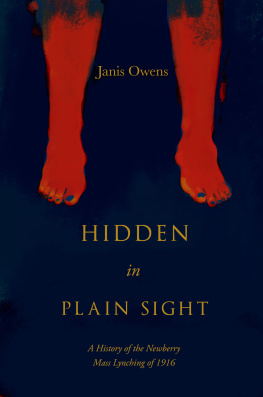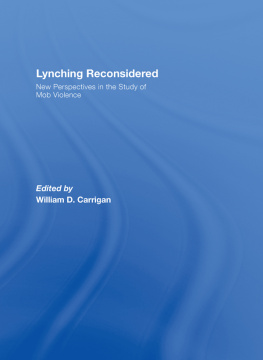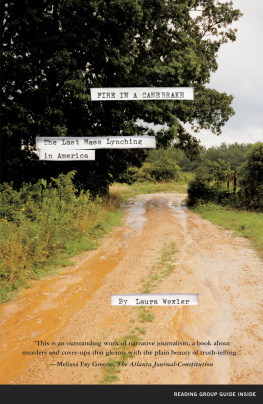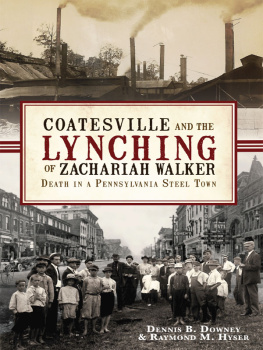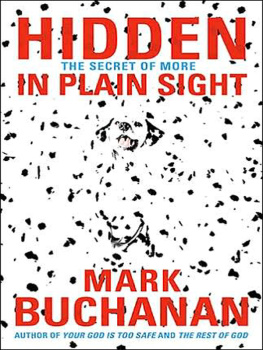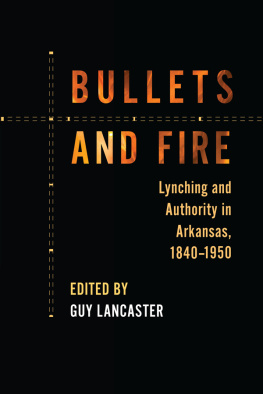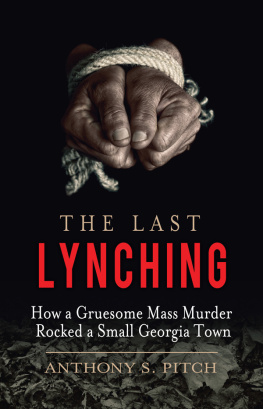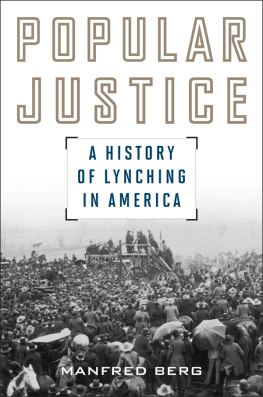Hidden in Plain Sight:
A History of the Newbury Mass Lynching of 1916
By Janis Owens
Copyright 2021 Janis Owens
ISBN 978-1-64663-369-2
All rights reserved. No part of this publication may be reproduced, stored in a retrieval system, or transmitted in any form or by any meanselectronic, mechanical, photocopy, recording, or any otherexcept for brief quotations in printed reviews, without the prior written permission of the author.
Published by

3705 Shore Drive
Virginia Beach, VA 23455
8004354811
www.koehlerbooks.com
It may be a good thing to forget and forgive; but it is altogether too easy a trick to forget and be forgiven.
G. K. Chesterton
For Patricia Hilliard-Nunn,
who embodied the passion and power of Sankofa.
Hidden
in
Plain Sight
A History of the Newbury Mass Lynching of 1916
Janis Owens

PREFACE
A t two a.m. on August 17, 1916, three men engaged in a gun battle in a vacant tenant shack in the cut-over pine barrens of Western Alachua County, nine miles west of Gainesville. Two of the men were white: George Wynne, a bachelor and seasoned deputy sheriff, and Lem Harris, a popular young pharmacist from nearby Newberry, who was recently married and had an infant son. The Black man, Boisy Long, was a farmer and father of three.
Deputy Wynne died the following morning from bullet wounds to his liver and lungs. His death sparked a murderous rampage that resulted in the vigilante lynching of six Blackspossibly more. Two of those hanged were women, and a third who was heavily pregnant was brutalized. All of the Black victims were connected by blood, marriage or kinship to Boisy, who was captured, tried and then hanged several weeks later.
Thousands of spectators assembled at the mass lynching site to gawk and celebrate as if at a country fair. Several local dignitaries were surely among them, perhaps even the man who would become Floridas next governor. Young children were said to have pushed the dangling corpses like swings at a playground. After the bodies were cut down, they were dumped like sacks on the ground as witnesses and perpetrators stood over them posing for photographers.
There are varying accounts of the circumstances that brought Long and the two white men to confrontation at such an odd hour of the night, and even more debate over who fired the first shotthe deputy, the pharmacist, or Boisy Long. What is indisputable is that the brief flare of gunfiresix rapid shots in the darksparked an American tragedy of uncommon proportions, one shameful in its brutality and doubly shameful in that its never merited more than a footnote in Florida history, though the larger community and the family of Deputy Wynne have been preserved down to the smallest nail and chicken coop at their family farm, now known as Dudley State Park.
Oaths of silence were taken that bloody weekend in 1916 and kept so securely that even a century later, the most enduring remembrance of the violence is an oak grove on the east end of Newberry that for over a hundred years has been called, casually and without regret, Lynch Hammock.
The history of the hammock and the names of those who were murdered that frantic, bloody weekend were very nearly lost to history. Among the confirmed dead were Deputy George Wynne; James Dennis; Reverend J. J. Josh Baskins; Gilbert Dennis; Andrew McHenry; Mary Dennis; Stella Young. Names of other victims might someday be added to the list of the murdered. According to the oral history of Jonesvilleand even a photograph of the daya longer count could be made.
These are the known casualties, those deaths that were documented in some form or fashion in newspapers, first-source witnesses, and court records of the day. The details of their last moments on earth were ignored, garbled, or intentionally denied. It is only with a close examination of the fading ink of history, along with oral history and a handful of first-hand testimony, that we can establish the circumstances of their final moments on earth.
Deputy Wynne died in the back seat of a borrowed Model-T Ford on the morning of August 18th, while being rushed to a waiting train in Waldo, Florida, in a futile attempt to get him to the hospital in Jacksonville for an operation that might save his life. James Dennis died at ten that same morning after being abducted at his home. He was shot in the back with a double-barreled shotgun by a vengeful member of a mob, reportedly a sworn deputy. The Reverend J. J. Baskins was returning home from the market in Newberry later in the day when he was caught by the same mob and hanged. James Dennis brother, Gilbert, his sister Mary, his in-laws Andrew McHenry and Boisy Longs wife, Stella Young Long, were systematically murdered at two oclock in the morning of August 19, on the one-day anniversary of Deputy Wynnes shooting.
The five Blacks lynched together were hanged two miles east of downtown Newberry at the old picnic grounds, in an oak hammock with a sink that created a natural amphitheater, that had become popular for both lynch parties and political speeches. The mob, later described by an eyewitness as two hundred of the best men in the district, chose the site for its close proximity to the highway, as the lynching of J. J. Baskins, Andrew McHenry, Albert Dennis, Mary Dennis and Stella Young was a spectacle lynching, meant for public consumption.
So intent was the mob that the corpses be publicly displayed that two guards were posted to make sure they werent immediately cut down, but left to hang until mid-afternoon in the pitiless Florida sun. On Saturday morning, August 18, 1916, the Old Gainesville Highway that lead west to Newberrya rutted hard-rock road more suited to cattle drives than automobileswas overrun by a steady stream of enthusiastic tourists.
Men, women, and not a few children came from all over the county, and numbered in the thousands to gather at the old picnic grounds and witness the mobs handiworkthe piteous, decaying corpses of a Methodist preacher, two brothers, their sister and her sister-in-law.
Chapter One
INDEPENDENT OF THE WORLD
A lachua is one of the older counties in Florida, created by the Florida territorial government in 1824, twenty-one years before Florida achieved statehood. Tucked securely into North Florida, the landmass of the original county was considerably larger than it is today. Long and narrow, it was bounded by the Georgia state line to the north, the Suwannee River to the west, and an ungainly dogleg to the south that stretched to the gulf at Charlotte Harbor.
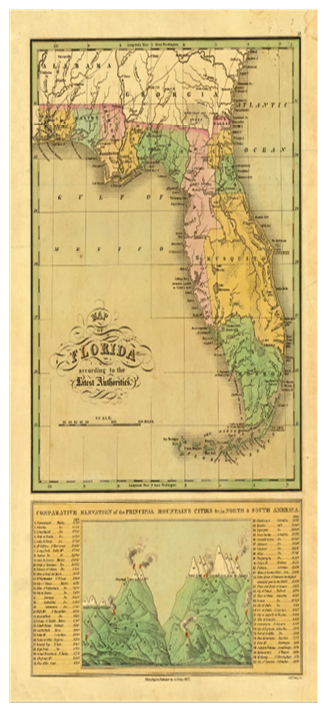
Figure 1. Finleys Map of Florida 1827. Courtesy of Florida Memory
The Suwannee marks the boundary of West and East Florida, and Alachua made up a good slice of East Florida so long that the topography changes from top to bottom. The Georgia side of the county was more attached to the plantation district of Middle Florida, while the southern end was more palmetto than live oak, still inhabited by the Seminole and their allies.
On early maps the central part of the sprawling county was described as high rolling pine, or less attractively, as pine barrens, and closer to the coast, the flatwoods. The aquifer was higher then, bursting the seams of the fragile limestone to flow aboveground in shallow ponds and sinks so wide that when the water line withdrew, the lakes became prairies.

